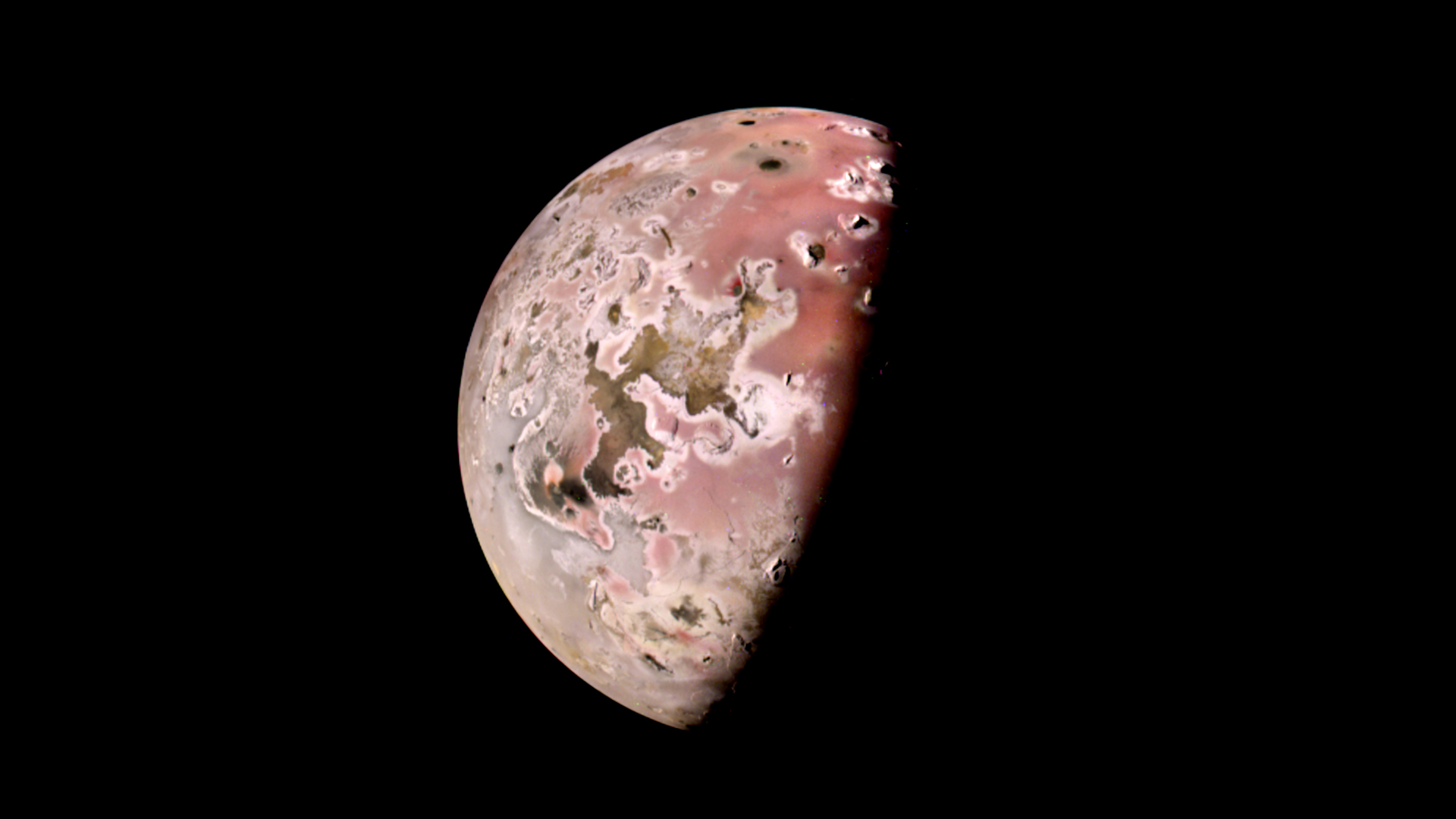Space photo of the week: Jupiter's seething volcano moon gets a close-up
Jupiter's moon Io, the most volcanic world in the solar system, was imaged from just 7,260 miles away.

What it is: Io, Jupiter's third-largest moon
When it was taken: Oct. 15, 2023
Where it is: 262,000 miles (422,000 kilometers) from Jupiter
Why it's so special: This photo, taken by NASA's Juno spacecraft, is the highest-resolution image taken of the most volcanic world in the solar system in 22 years. During Juno's 55th orbit of Jupiter, the spacecraft came within just 7,260 miles (11,680 kilometers) of Io's pockmarked surface, snapping dozens of images. The photo above (which is in exaggerated contrast and color) reveals new details about Io's north polar region, which is covered by mountains as tall as 20,000 feet (6,000 meters), according to Io expert and image processor Jason Perry.
Also published is a compilation of Juno's images of Io taken on Oct. 16, as well as another photo showing both Io and Jupiter in the same field of view.
Io is the fifth most distant moon from Jupiter, orbiting at an average distance of 262,000 miles (422,000 kilometers), and the third-largest Jovian moon, at slightly larger than Earth's moon, according to Space.com. (It's smaller than Ganymede and Callisto, but bigger than Europa.)
Io is covered in volcanoes, with about 100 times greater volcanic activity than Earth's, according to NASA. The cause is tidal friction; Io is tidally locked to Jupiter, always showing the planet the same side, yet its orbital path is elliptical because of the gravitational pull of both Europa and Ganymede, according to NASA. As Io bulges in and out, the friction creates heat.
Get the world’s most fascinating discoveries delivered straight to your inbox.
The images, taken by the spacecraft's two-megapixel JunoCam, are the highest-resolution photos of Io since NASA's Galileo orbiter was in the Jovian system in 2001. During its mission, Galileo photographed two tall volcanic plumes from the moon's Pele and Tvashtar Catena volcanoes.
Juno is on the cusp of two even closer passes of Io. The spacecraft will make its 57th and 58th closest approaches, or perijoves (close passes), of Jupiter on Dec. 30, 2023, and Feb. 3, 2024, when it will get within just 930 miles (1,500 km) of Io's surface.

Jamie Carter is a freelance journalist and regular Live Science contributor based in Cardiff, U.K. He is the author of A Stargazing Program For Beginners and lectures on astronomy and the natural world. Jamie regularly writes for Space.com, TechRadar.com, Forbes Science, BBC Wildlife magazine and Scientific American, and many others. He edits WhenIsTheNextEclipse.com.


